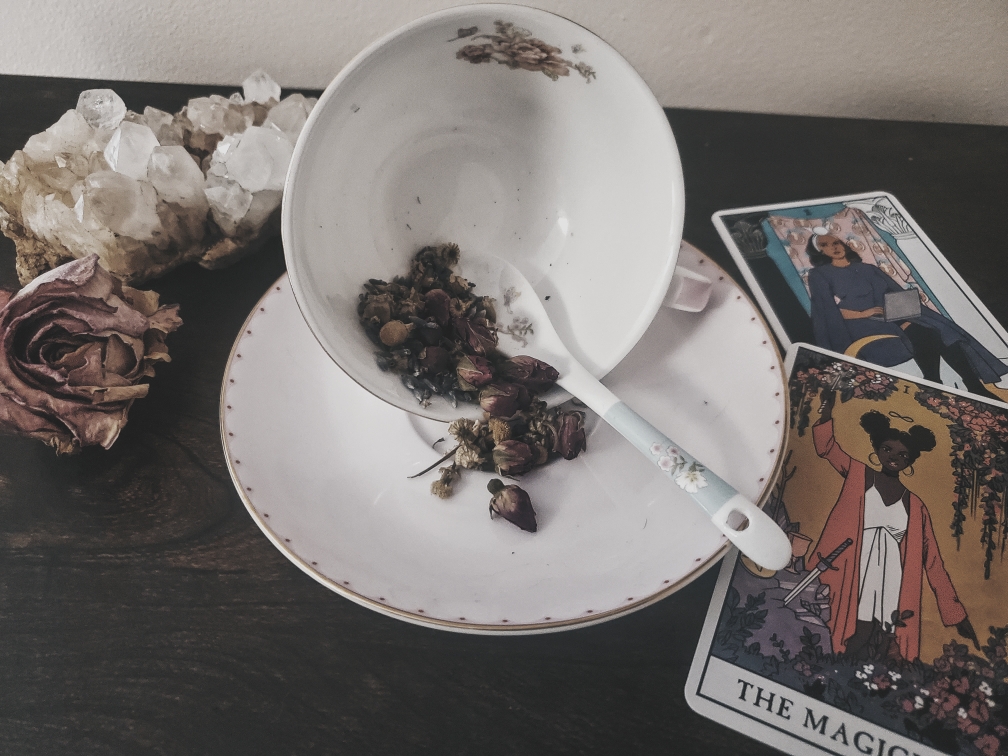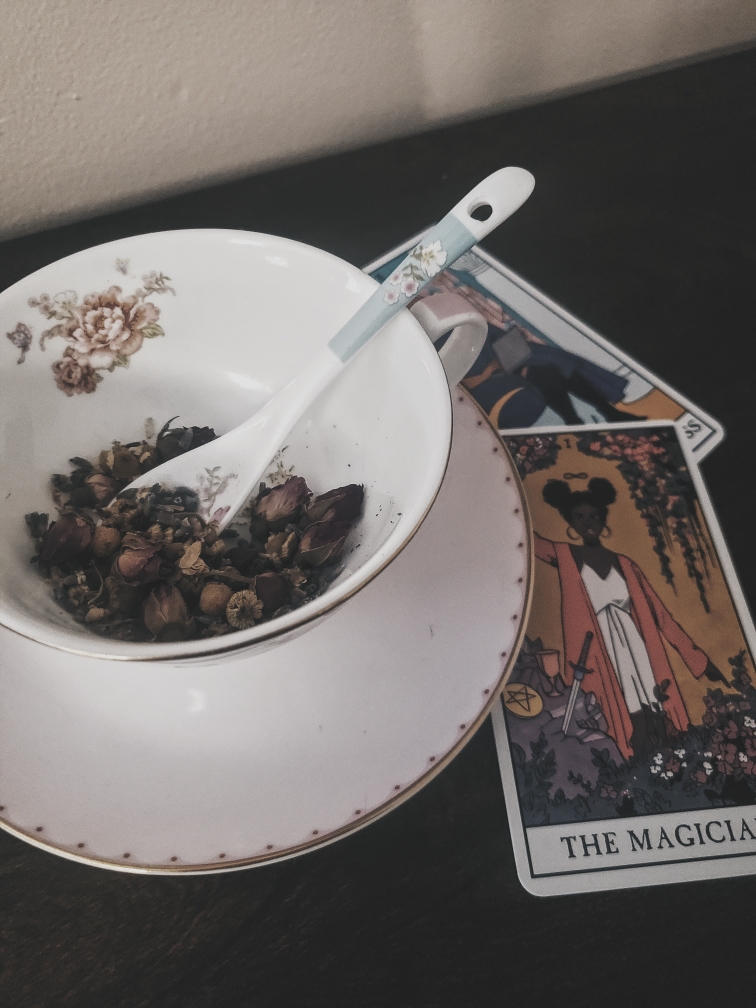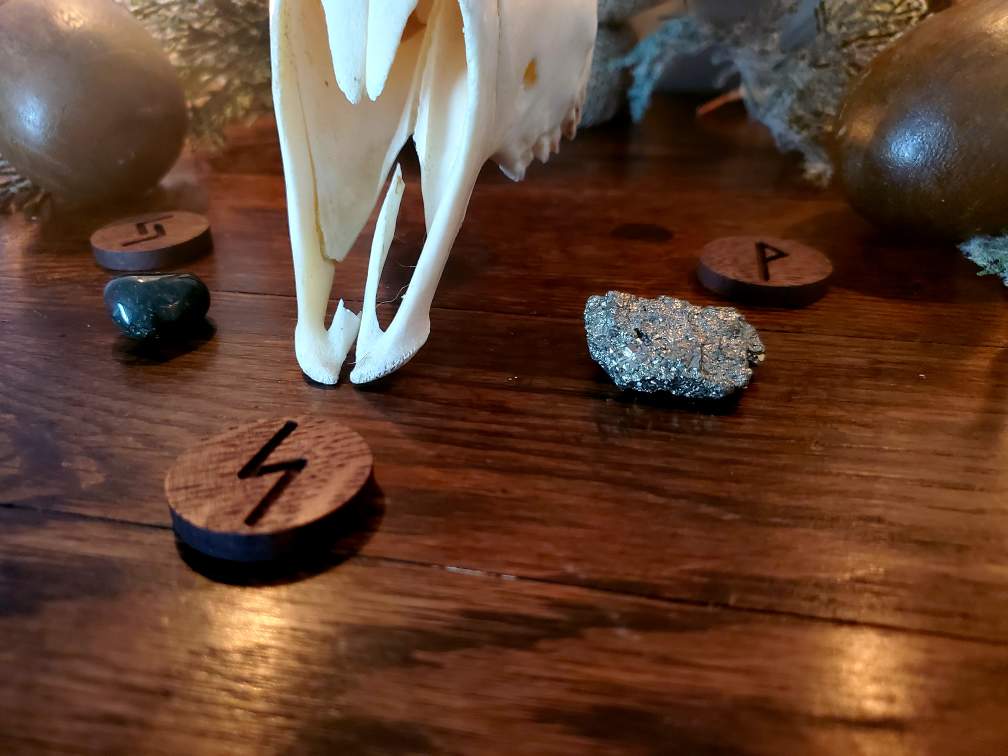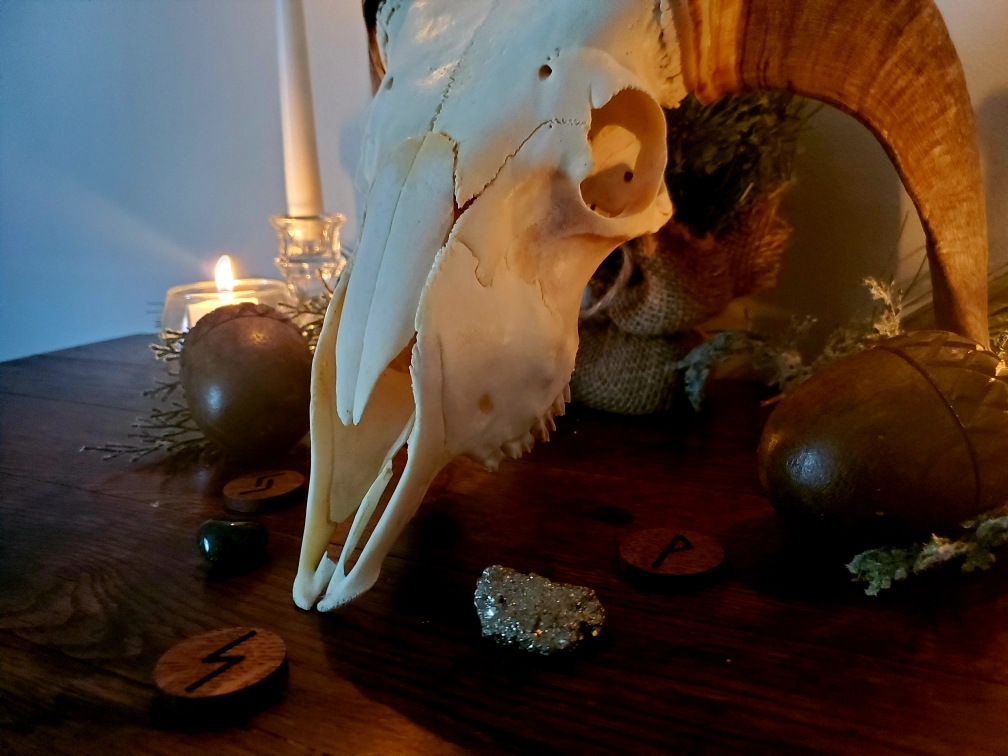What You'll Need
- 1 cup water
- 1 tsp chamomile or 1 chamomile tea bag
- 1 teaspoon dried sage
- 1 teaspoon dried rose petals
- 1 teaspoon dried lavender
- 1 teaspoon honey
- Tarot deck
What to Do
Before you begin this spell, cleanse and consecrate your space using your preferred method. If you wish, cast a circle and invite any spirits or deities, such as Brigid, Freyja, Aurora, or Janus, you wish to join you in your ritual. Next, awaken the dried herbs using your preferred method, such as holding them in your hand, whispering to them, or blowing your intention into them (be sure not to blow them away).When ready, bring the water to a boil in a small saucepan. Add the chamomile, sage, rose petals, and lavender to the water. Reduce the heat to low and let the tea steep for 5-10 minutes. Strain the tea into a mug and add honey, stirring clockwise. As you stir, imagine the tea filling with golden light and say, "Infusion of chamomile, sage, rose, and lavender, bring peace and serenity in the new year. Remove past blockages and leave a clean slate, so I may manifest my best fate. I draw only the positive to me now, to ensure my year is bountiful and plenty."
Sit in a comfortable and peaceful place and hold the mug in your hands. Take a few deep breaths and allow yourself to sink into a meditative state. As you drink the tea, visualize yourself letting go of any negativity or challenges from the past year. Imagine these things dissolving and drifting away like smoke. Focus on your intentions for the new year, and visualize yourself manifesting abundance, happiness, and success.
When your visualization is complete, take a moment to focus on your intention for the new year. What do you hope to achieve or experience in the coming year? Keep this intention firmly in your mind as you shuffle your tarot deck. Ask the cards to reveal any insights or messages that will help you manifest your intention in the new year.
Choose a card (or cards, if you feel called to do so) from the deck and lay them out in front of you. Take a few minutes to meditate on the card(s) and see what message or guidance they have for you. Write down any insights or messages that you receive from the cards in your journal or Book of Shadows, so you can refer to it throughout the year as a reminder of your intention and the guidance you received from the tarot.
When you have finished your tea and completed the tarot reading, take a moment to thank the universe and any deities/spirits you invited to your ritual for supporting you in manifesting your intention for the new year. Be sure to leave an offering in return, such as water, bread, honey, a bit of tea, or wine.
Why You Did It
Understanding the why's of a spell are just as important as performing it. It helps you understand the process so you can modify the spell or ritual to suit your needs and helps guide you to write your own. It's my intention that by providing these explanations, you can build a better understanding of how spells are written and executed so you can modify and build your own spells (the goal of my Spellcrafting Series).This spell begins with awakening the dried herbs. Unless you are using freshly picked leaves, you will find that the energy of dried herbs is often quiet or stagnant. By waking up the herbs, you reawaken their energy, set the intention for the spell, and call on the spirit of the plant to aid you in your magical endeavors. This is often something I forget to do, but you'll find that waking up the herbs prior to using them strengthens and empowers the spell in a way that sleeping herbs do not.
The herbs chosen for the tea blend help to create a peaceful and uplifting atmosphere and can support the intention of letting go of the past and manifesting a positive and abundant new year. Chamomile reduces anxiety and promotes calmness while also attracting love, luck, and positivity. It's also a potent hex/curse remover, making it perfect for removing any negativity from the past year. Sage is a cleansing herb, allowing you to shed the past, protect your future, and gain the mental clarity needed to manifest your desires. Rose, like chamomile, reduces anxiety and brings uplifting energy to the spell, ensuring a positive future. Finally, lavender helps purify, sharpen the mind, heighten psychic awareness, and manifest love and happiness. Lavender, in particular, helps you seek guidance from Spirit during the tarot reading that follows the tea ritual. Finally, the honey is to sweeten and bind the spell, ensuring your manifestations are positive.
I chose tarot for this ritual because it's the most commonly used form of divination among modern witches. Of course, you don't have to use tarot. You can also use runes, meditation, hedge riding, automatic writing, or even a spirit board to seek guidance. These are all methods of corresponding with spirit and are all valid. Pick what works best for you.
If you liked this post and would like to support future content, please consider leaving a small tip in the jar.
Finally, this spell is best performed on New Year's Day/New Year's Eve or the first full moon of the year. New Year's Day and Eve are associated with new beginnings, while the full moon is associated with manifestations. However, this spell can be performed whenever you feel the need to "start over," especially if you have gone through significant life changes, such as a marriage or divorce, the birth of a child, the loss of a family member or friend, changed jobs, or moved into a new home.
Wish to break this spell? If for some reason you no longer wish to manifest your original goal, there are a couple of ways you can break this spell. You could take a cleansing bath/shower, do a chord-cutting ritual, or write a new spell where you state that you no longer wish to manifest your original desire. In either case, be sure to thank the Universe, your deities, or spiritual guides for helping you to begin with, and let them know their services are no longer required on this matter.
Remember to record this ritual on your ritual/spell worksheet or in your Book of Shadows for reference later.
***
I hope that everyone has a magical, fulfilling 2023. According to numerology, 2023 is associated with the number 7, which is the number of magic, spiritual knowledge, manifestation, and luck. The past couple of years have been rough, but great change is coming our way. Why not make the most of it?
If you liked this post and would like to support future content, please consider leaving a small tip in the jar.



























